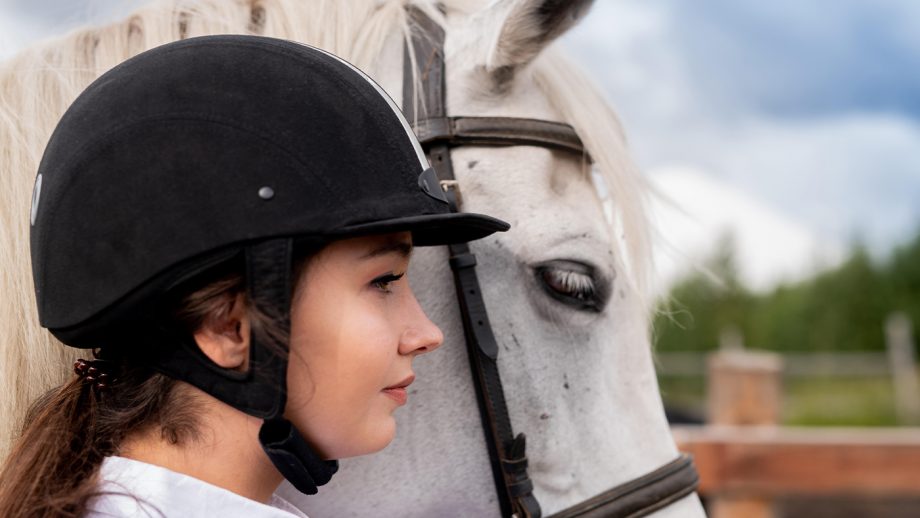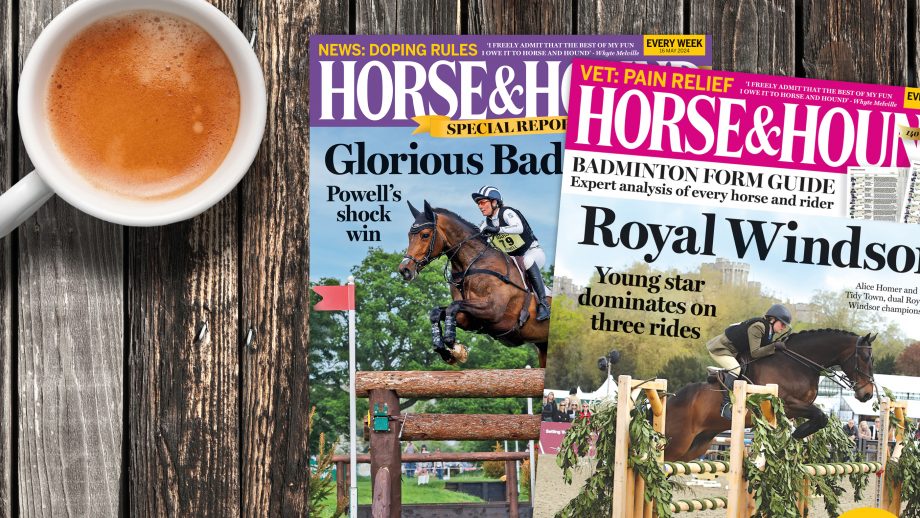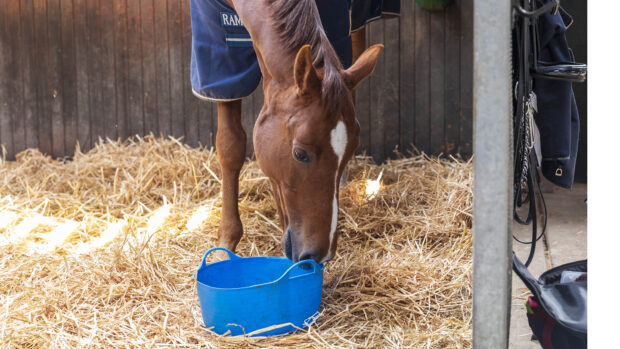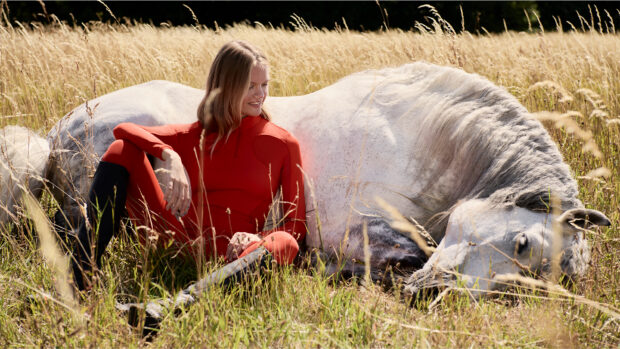You’ve memorised your test, polished your transitions, and your horse is ready to shine – but is your competition outfit up to scratch? Whether it’s your first test or you’re getting back in the saddle, knowing what to wear can be just as important as remembering the test itself. From unaffiliated shows to affiliated competitions, this guide ensures you’re dressed for success.
For unaffiliated competitions, dress codes tend to be more flexible, though some shows adhere closely to British Dressage (BD) standards. If in doubt, check with the organiser beforehand. If you’re competing at a BD-affiliated event, strict dress regulations apply – scroll down for the latest, up-to-date guidelines.
What to wear for dressage competitions
For any dressage competition, whether affiliated or unaffiliated, the basics remain the same:
- riding hat – this should meet safety standards (see our guide to the best riding hats)
- riding boots – you can wear either long or short boots and gaiters are optional (see our guide to the best long boots)
- breeches – while traditionally these were light in colour, BD rules now allow darker colours too (see our guide to the best competition breeches)
- show jacket – in any solid colour or tweed at lower levels (see our guides to the best show jackets and best tweed jackets)
- show shirt – long- or short-sleeved with a white round collar or appropriate collar for stock or tie (see our guide to the best show shirts)
- stock or tie – it’s up to you, but stocks are more common (tradition suggests wearing white with a black/navy jacket, coloured with tweed)
- gloves – must be worn, and look smartest in the same colour as your breeches, but avoid light colours if your hands are unsteady (see our guide to the best riding gloves)
- saddle pad – a white square is the smartest (see our guide to the best dressage squares)

Equetech Deluxe Ready Tied Stock | Amazon
This smart stock with diamond embellishment has a simple Velcro fastening.

Uvex Sportstyle Gloves | Amazon
These gloves give good grip and feel on the reins, and have touch-screen compatible fingers, too.
Below, we’ve outlined all the specific rules and variations depending on the competition level in more detail.
What to wear for affiliated competition
Whether you’re preparing for your first dressage test or competing at an advanced level, wearing the correct attire is essential. BD has specific rules on competition dress, and staying up to date ensures you’re compliant. Here’s everything you need to know about what to wear, based on the BD rulebook for 2025.
Jackets & coats
- Intro to advanced medium (FEI Junior tests): Short riding jacket, tweed coat, or uniform with a correctly tied stock, white round collar, or a shirt and tie.
- Advanced & opwards: Riders may wear a tailcoat or a short jacket with a protective hat and a correctly tied stock or shirt and tie.
- Forces & service personnel: Uniforms may be worn with a protective hat.
- Any single-colour tailcoat, jacket or waistcoat is permitted
- Subtle pinstripes, coloured collars, contrast piping and discreet crystal accents are allowed
- Tweed is permitted but should not have bold patterns
- Accents such as collars, cuffs, pinstripes or crystal decorations are permitted, but British team jackets (navy with a red collar and white piping) are reserved solely for British team riders
- Waterproofs: Plain or transparent waterproof coats can be used in wet weather
- Gilets are not allowed
Shirts
- Can be long or short-sleeved in any solid colour
- Must fasten at the neck with a correctly tied stock, white round collar, or a tie
Breeches & jodhpurs
- Should predominantly be a solid colour – but no longer have to be white
- Dark-coloured contrast seats are allowed
- Stripes or bold patterns are not allowed
Hat requirements
- Must be worn at all times when mounted – whether or not you’re competing – with the harness correctly fastened
- Top hats are not permitted
- Hats and hat covers may be any conservative colour (fully mirrored hats are not allowed)
- Approved hat safety standards:
- British: PAS 015 (2011 onwards)
- European: VG1 or EN1384:2023
- American: SNELL E2016, E2021, ASTM F1163 (2015 onwards)
- Australian & New Zealand: AS/NZS 3838 (2006 onwards)
- Hats with a BSI Kitemark or SAI certification are strongly recommended
Gloves
- Compulsory in all BD competitions – but can be any colour
Boots
- Conventional riding boots (long or short) must be worn
- Short riding boots with or without gaiters or half chaps of the same colour are allowed
- Fringed or suede gaiters/chaps are not allowed
Body Protectors
- Body protectors, air jackets and soft-shell air jackets are all permitted
Spurs
- Permitted at all levels, but no longer mandatory from Advanced level upwards
- Must be worn as a pair (except for side-saddle classes)
- Made of metal (coating permitted)
- Rubber, metal, or plastic rotating ball spurs are allowed
- Comb spurs are not permitted
- The shank must point towards the rear and the end must be horizontal or pointing downwards
- Dummy spurs and swan-neck spurs are permitted
- Any shank or rowel type is allowed as long as the rowel rotates freely
- Rowels must have rounded points
- In Children on Horses and FEI Pony classes, only blunt metal spurs are permitted, with a maximum shank length of 3.5cm, measured from the boot to the tip
Cultural, religious or medical dress
- Where specific clothing items are worn on cultural, religious or medical grounds that may conflict with the rules above, BD asks members to contact their head office to endorse a suitable solution while still safeguarding the welfare of all participants
Other competition rules
In addition to standard dress requirements, some riders may be required to wear armbands for identification or dispensations. Similarly, whips are subject to specific rules depending on the event.
Whips
Whips are allowed in some competitions but are restricted in others. Here’s when you can and can’t carry a whip:
Whips ARE permitted at:
- All qualifiers, including Quest and Quest regionals/championships
- Warm-up classes at championships
- Young horse/pony (4, 5, 6, 7yo) qualifiers
- Young horse/pony (4yo) championships & semi-finals
- Premier Leagues and High Profile shows (selectors may request whips are not used)
- Ladies riding side-saddle at any level
- Para riders (if permitted under their dispensation certificate)
Whips are NOT allowed at:
- Championships, including:
- Area Festivals, Regionals, Nationals, and Winter Championships
- Associated Championships (including Forces Equine)
- Combined Training Championship (dressage phase)
- Middle Tour Championships
- Young horse/pony (5, 6, 7yo) championships & semi-finals
- FEI Young Horse Tests
The maximum whip length allowed is 1.2m for horses and 1m for ponies (measured from the top of the handle to the very end).
Armbands & rider dispensations
Certain riders may wear colour-coded armbands to indicate specific needs or permissions:
- White armband → Riders with visual impairments
- Royal blue armband → Riders with hearing difficulties
- Sunflower armband → Riders with hidden disabilities (this does not grant dispensation but raises awareness)
- Yellow tabard/armband → Required for support riders assisting grades I to III
Non-classified riders can apply for a dispensation certificate from BD to use compensating aids in non-disabled competitions, including championships.
Sponsorship & logos
Riders may display their sponsor’s name and/or logo on their attire within the following size limits:
- Jackets: Max 80cm² on each side at breast pocket height
- Shirt collar/stock: Max 16cm² on each side
- Manufacturer’s logo: Max 3cm² on any item of clothing
Whether you’re aiming for your first test or stepping up to advanced levels, dressing correctly ensures you feel confident and prepared in the ring. Need help choosing competition gear? Check out our expert buying guides to complete your competition look.
- To stay up to date with all the breaking news from major shows throughout 2025, subscribe to the Horse & Hound website
You may also be interested to read…

Fancy trying affiliated dressage, but not quite sure where to start? You need to read this…

15 of the best competition breeches to wear in the saddle this season

13 riding hats that are worth your attention

Subscribe to Horse & Hound magazine today – and enjoy unlimited website access all year round






